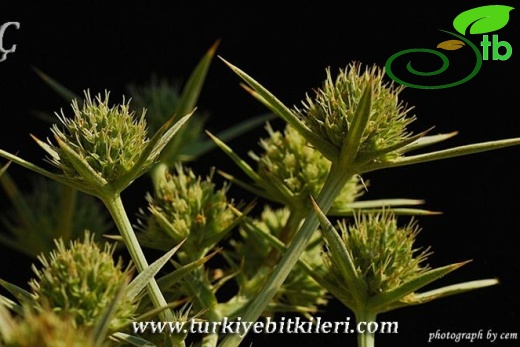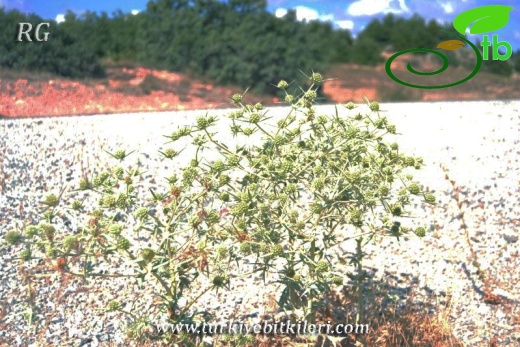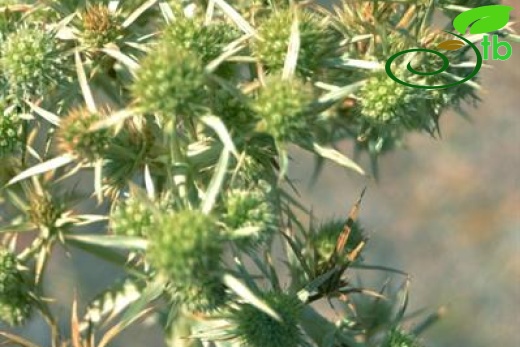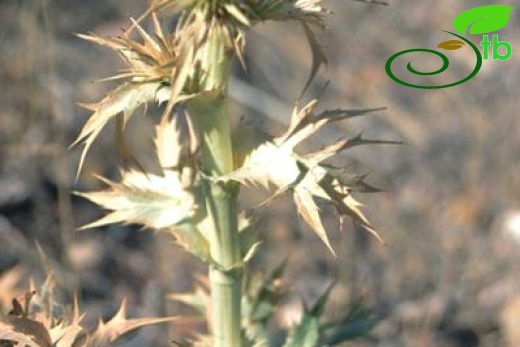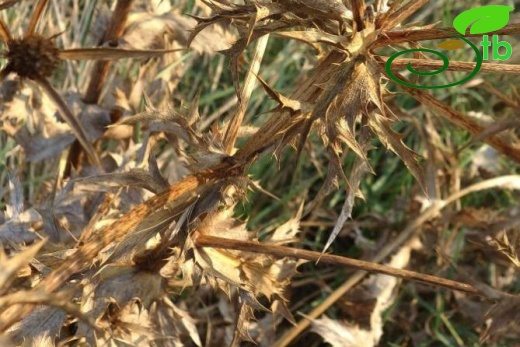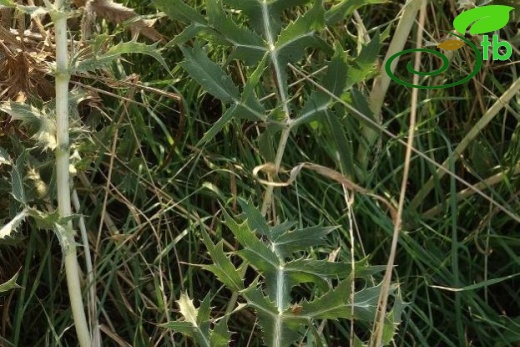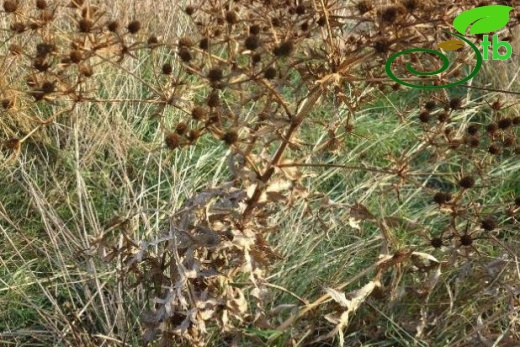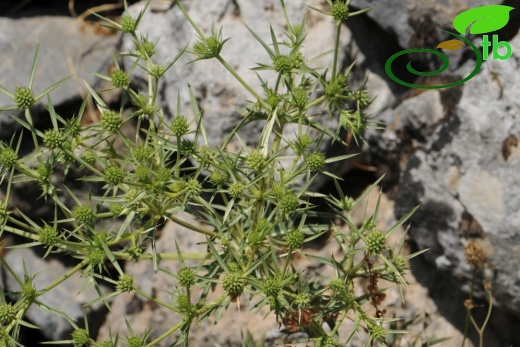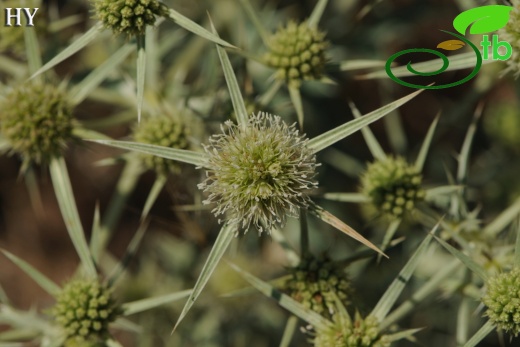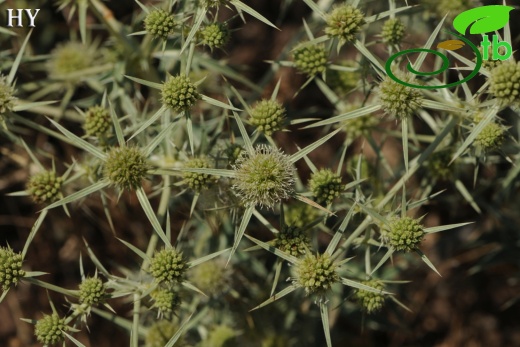Eryngium campestre
Eryngium campestre
Kırsenet
Rigid perennial , with a fibrous collar. Stem usually solitary, 30-60 cm, terete, widely branched from about the middle. Basal leaves persistent, triangular-ovate in outline, 10-25 x 10-18 cm, coriaceous, mostly ternate with spreading bipinnatifid primary segments, the lobes and winged rachis spiny-dentate . Cauline leaves smaller, the median and upper ones with a broad, subamplexicaul, spiny-margined base, those of the inflorescence mostly tripartite. Inflorescence yellowish-green or sometimes glaucous, forming a widely spreading, corymbose panicle; capitula numerous, ovoid-globose, 7-13 mm diam. Bracts 5-6, linear-lanceolate to -subulate,pungent, straight, entire or with the margin remotely spinulose, 1,5-3 x capitulum. Bracteoles entire, longer than sepals. Mericarps covered with lanceolate, very acute scales. Fl. 7-9. Open woodland, stony hillsides, disturbed steppe, fallow fields, dunes, s.l.-1800 m.
1. Inflorescence glaucescent; bracts linear-lanceolate , ± flat, 2-4 mm broad, with conspicuous reticulate venation, margin often remotely spinulose var. campestre
1. Inflorescence yellowish-green; bracts linear-subulate , subtriquetrous, usually 1-2 mm broad, with inconspicuous reticulate venation, margin usually entire var. virens
Distribution of species: W., C. and S. Europe, C. & S. Russia, Crimea, N. Africa, S.W. Asia eastwards to Afghanistan.


